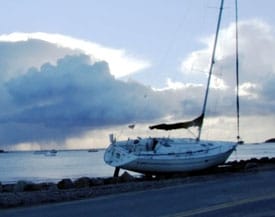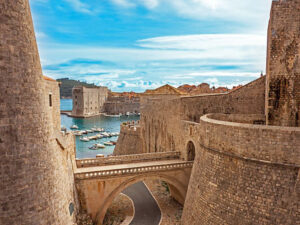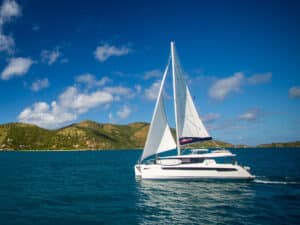
StormStory
Sometimes it’s the late season storms that pack the worst punch. Sailors tend to follow the weather closely during the height of hurricane season, and when the end of the season draws near without incident, we all breathe a sigh of relief. Sometimes those sighs come a little too soon. Late season storms can catch us offguard, and that’s what happened in Padanaram Harbor in South Dartmouth, Massachusetts, on October 28.
Dartmouth harbormaster Steve Melo said that last Saturday’s storm was the worst he’s seen since 1991’s Hurricane Bob. A number of factors combined to make this storm eerily similar to the “Halloween storm” or “unnamed hurricane,” also in 1991, that came to be known as “The Perfect Storm.”
Dangerously high winds and heavy rain had been forecast earlier in the week, but no one predicted how nasty the storm would really be. At high tide on Saturday afternoon, when the storm was really raging, winds reached 55 knots, gusting to 60 knots. Adding fuel to the fire, the wind’s southeasterly direction coincided with the most exposed section of Padanaram Harbor, opening up the harbor to the worst of Buzzards Bay. According to Melo, Saturday’s high tide was four- and a-half feet above the normal high tide, and waves in the harbor grew to six and seven-feet high.
Hurricanes tend to blow through an area rather quickly, said Melo, but this storm stuck around for 12 hours after it hit. The storm’s duration is what caused so many boats to lose their moorings. “Moorings get tired at the end of October,” said Melo. “It’s the end of the season and those lines have been getting tugged and pulled for a while. And barnacles can accumulate and act as little knives, which weaken the lines.”
The cooler air of late October was also a factor in the storm, said Melo. Cooler air is denser, and therefore more dangerous. Twenty-five knots of cold wind packs a much bigger punch than 25 knots of warm wind. “Just ask any frostbite sailor,” adds Melo.
In an attempt to save boats in Padanaram Harbor, Melo set up a rescue effort on Saturday morning. By 9 a.m., Melo had two rescue boats, each with a two- or three-person crew, zooming around the harbor trying to tame the chaos in increasingly hazardous conditions. Fourteen sailboats broke free from their moorings and were variously headed for the yacht club, other boats, and a mostly rocky shoreline.
The rescue crew’s quick thinking, cool heads, and impressive skills-such as lassoing a bow cleat on an unmanned sailboat at six or seven knots, sending a swimmer into the water with a towline to attach to a boat, and having a guy jump from the rescue boat onto a rogue vessel-helped to save eight of the 14 runaway boats. The six boats Melo and his crew couldn’t save landed on a stretch of shore just a few feet from Smith Neck Road.
Sunday’s sunny skies brought a large crowd out to survey the damage. Scattered amongst the curious onlookers were a few boat owners trying to assess the damage to their boats and come up with plan to remove them from their rocky cradles. Some opted to foot the sizeable expense of getting a crane and a trailer, while Tom Swift, owner of the 30-foot, Carl Alberg-designed Sirius, opted to hire a tugboat to coax his boat back into the water at high tide on Tuesday, October 31.
Even if the tug can drag Sirius into open water, Swift isn’t sure the boat will float. But if it does, Swift said, “I’ll sail right into Marshall Marine (a boat yard just a short way down the harbor) and call it a season.”








